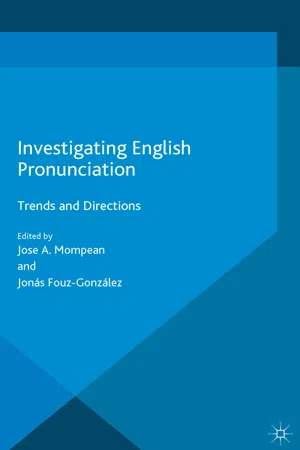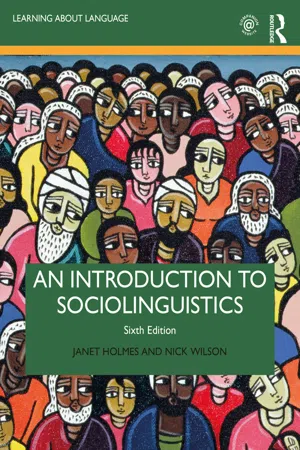Languages & Linguistics
Scottish English
Scottish English refers to the varieties of the English language spoken in Scotland. It encompasses a range of accents, dialects, and vocabulary influenced by the Scots language and Gaelic. Scottish English is characterized by its distinct phonological, lexical, and grammatical features, reflecting the historical and cultural influences on the language in Scotland.
Written by Perlego with AI-assistance
Related key terms
Related key terms
1 of 4
Related key terms
1 of 3
4 Key excerpts on "Scottish English"
- eBook - ePub
Unlocking Scots
The Secret Life of the Scots Language
- Clive Young(Author)
- 2023(Publication Date)
- Luath Press(Publisher)
Concise Scots Dictionary tries to capture this complexity.The language of contemporary Scotland can fairly be described as fluid. It is marked by a wide and highly variable range of speech-styles, ranging from the broad Scots of some fishing and farming communities, through various intermediate ‘mixtures of Scots and English’, to a variety of standard English spoken in a Scottish accent (ie SSE ) [Scottish Standard English]. Even the last of these usages retains obvious affiliations with the more fully Scottish speech styles – in the accent with which it is pronounced [and] in the speakers’ frequent recourse to repertory of Scotticisms…23We are just not used to thinking about ‘languages’ operating in that way, and in the face of such formidable fuzziness, there has been a temptation to label all Lowland vernacular speech as ‘Scots’. For example, in 1997 the Scottish National Dictionary lexicographer Iseabail Macleod stated that:[Scots] covers everything from dialects that the English – or other Scots – wouldn’t understand, to the way we’re speaking right now, which is English with a Scottish accent.24If you are compiling lists of Scotticisms, an all-inclusive definition may be reasonable, but it undermines the case just made for Scots being a separate language system. An over-permeable classification also allows other scholars to label exactly the same complex that Macleod described as ‘Scottish English’.25We will explore mixing in more detail later, but in my view, hazy terminologies run the risk that the term ‘Scots’ becomes a nebulous descriptor rather than the name of a discrete language. To consider Scots as a normal minority language we require far more precise terminology, one that unambiguously identifies the Scots language components of Scottish Lowland vernacular. To this end, three distinct patterns of Scottish speech can be identified, drawing from the definitions above. - eBook - ePub
- Alexander Bergs, Laurel Brinton(Authors)
- 2017(Publication Date)
- De Gruyter Mouton(Publisher)
diglossia found in German-speaking Switzerland or the Arabic-speaking world today, lasted for some 100 to 150 years in Scotland.In 1707, the parliaments of Scotland and England united; while the Scottish Church and Law were protected by the Union settlement, practically all governmental functions for Scotland were carried out in Westminster. A significant part of the urban middle classes, particularly in Edinburgh, began to trim their linguistic sails towards this new order. Throughout the 18th century, English was taught as essentially a second language throughout Scotland. Self-help manuals abounded, listing Scotticisms to be avoided. These were largely lexical, but also included a considerable number of grammatical and morphological features (Dossena 2005). By the end of the century, a new variety, Scottish Standard English (SSE), had come into being. Standard English in grammar, morphology, and (largely) lexis, speakers of this variety generally use a (sometimes altered) version of their local accent (there is no standard accent in Scotland), although with a basic representation of the southern English rather than Scots phonological pattern. In SSE there are both overt Scotticisms , words associated with Scottish culture and heritage, used consciously to mark identity, and covert Scotticisms , words which the speaker thinks are English, but are actually Scots, or merely a Scots word which has been Anglicized phonologically (Aitken 1981).Thus a wedge was forced into the Scots-speaking population, with the rural and the poor (the overwhelming majority, of course) using Scots, while the upper middle classes used English. Since these upper middle classes were the arbiters of literary style and controlled both publishing and education to a considerable degree, it was their views on the national vernacular which were carried into print and action: Scots was associated with old and barbaric times, English with a progressive future (Millar 2003). As an urban lower middle class developed through industrialization, they largely assimilated these views. It is striking that while those areas of Gaelic Scotland which were Scotticized in the early modern period, such as the North-East, have retained forms of Scots as a local vernacular, those areas where Gaelic culture was attacked in the wake of the rebellion of 1745–1746 took on a form of SSE as their new variety: Highland English. - eBook - ePub
Investigating English Pronunciation
Trends and Directions
- Jose A. Mompean, Jonás Fouz-González, Jose A. Mompean, Jonás Fouz-González(Authors)
- 2015(Publication Date)
- Palgrave Macmillan(Publisher)
Bringing these issues together, we can see why children and adolescents are vehicles for linguistic change, and not merely parts of a synchronic system of low-level sociophonetic variation (Kerswill, 1996; Smith et al., 2007). Roberts and Labov are clear that even ‘young children are indeed members of the speech community, and no description of these communities is complete without their inclusion’ (1995, p. 101). The output of acquisition is not simply a parent-identical phonology, even in cases when the parents’ accents are in fact phonologically identical. Instead, the child integrates a range of influences: mixed parental and caregiver input (Gordeeva, 2005; Kerswill and Williams, 2000; Matthews, 2001; Roberts and Labov, 1995); peer or sibling influence (Starks and Bayard, 2002); dialect mixing across borders (AISEB, 2012); a mismatch between parental accent and the community (Chambers, 1992; Scobbie, 2005, 2006; Tagliamonte and Molfenter, 2007); and even the use of non-local accents on television (Stuart-Smith et al., 2007, 2013). All of these factors are, moreover, inextricably linked with the attitudes of child and adult speakers to both their own and others’ use of regional varieties because ‘speakers’ phonetic variation can affect how others socially evaluate them’ (MacFarlane and Stuart-Smith, 2012, p. 764).Scotland is a complex linguistic environment and English/Scottish aspects of accent have been used as indicators of both local identity and socioeconomic status (Braber and Butterfint, 2008; Macafee, 1997; Macaulay, 1975, 1976; MacFarlane and Stuart-Smith, 2012; Preston, 2002; Smith et al., 2007; Stuart-Smith, 2007). Such clarity of social meaning begins to break down when populations move and mix: children born in Scotland can acquire accents which have characteristics of both SSE and SSBE, and such children are regarded as idiosyncratic outliers whose systems are of little systematic phonological interest. Our view is that such mixtures are intrinsically interesting from phonological and acquisitional perspectives as well as from the perspective of sociophonetics.The broad phonological differences between SSE and SSBE vowel systems suggest that numerous phonological reflexes of accent mixture might be found, even in children whose social and family backgrounds tend to lead to the acquisition of the same standard variety. In the future, the accents of Standard English in Scotland might become even more variable, such that the concept of a linear continuum with SSE at the most standard end is untenable. Or it might be that a single standard Scottish accent arises as a nexus, distinct from both SSBE and vernacular and more strongly Scots-influenced varieties. From sociolinguistic and acquisitional points of view, this is a particularly interesting situation, which will be played out across the whole socio-geographical spectrum in Scotland, in time. But even from a purely structural, phonological point of view, just the issue of what current SSE features might change in middle-class standard speech given the influence of SSBE is an interesting one. We might expect, for example, that rhoticity would be an important feature to retain, given its pervasive phonological role differentiating SSE and SSBE, and for differentiating middle-class from vernacular Scottish English (Stuart-Smith, 2007; Stuart-Smith et al., 2014). Diphthongization of FACE and GOAT - eBook - ePub
- Janet Holmes, Nick Wilson(Authors)
- 2022(Publication Date)
- Routledge(Publisher)
There are infinite sources of variation in speech. A sound spectrograph, a machine which represents the sound waves of speech in visual form, shows that even a single vowel may be pronounced in hundreds of minutely different ways, most of which listeners do not even register. Some features of speech, however, are shared by groups, and become important because they differentiate one group from another. Just as different languages often serve a unifying and separating function for their speakers, so do speech characteristics within languages. Due to their regional dialects, the pronunciation, grammar and vocabulary of Scottish speakers of English are all in some respects quite distinct from those of people from England, for example. Though there is variation within Scotland, there are also some features which perform an overall unifying function. The letter r in words like girl and star is pronounced in a number of English-speaking areas, and Scotland is certainly one of them. And a Scot is far more likely to say I’ll not do it than I won’t do it, meet you at the back of 1 rather than some time after 1, and he lives outwith Edinburgh rather than he lives outside Edinburgh. Similarly, the pronunciation of bath with the same vowel as in sat distinguishes a speaker from the north of England from a southerner. And while many speakers of English use the same vowel in the three words bag, map and bad, workers in Belfast pronounce them in ways that sound like [beg], [ma:rp] and [bod] to English people. Speech provides social information too. Dropping the initial [h] in words like house and heaven often indicates a lower socioeconomic background in English
Index pages curate the most relevant extracts from our library of academic textbooks. They’ve been created using an in-house natural language model (NLM), each adding context and meaning to key research topics.
Explore more topic indexes
Explore more topic indexes
1 of 6
Explore more topic indexes
1 of 4



